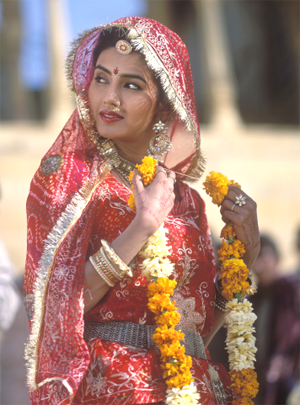Oct 19, 2025
Oct 19, 2025
 This write-up deals with the evolution of Indian culture and not just Hindu culture. Culture and civilization mutually influence each other and are complementary and supplementary to each other. Language essentially moulds culture. Religion, fine-arts, natural, secular and social sciences, philosophies, ideologies etc., constitute culture. Literature and texts of all disciplines, arts and skills are off-shoots through language and learning. Language is the medium that conveys all expressions. Experiences, intuitions, understanding, insight, emotions, perceptions, thinking, feelings, knowledge etc., are given form through language. Thus language is backbone for culture. Religion is secondary in this regard.
This write-up deals with the evolution of Indian culture and not just Hindu culture. Culture and civilization mutually influence each other and are complementary and supplementary to each other. Language essentially moulds culture. Religion, fine-arts, natural, secular and social sciences, philosophies, ideologies etc., constitute culture. Literature and texts of all disciplines, arts and skills are off-shoots through language and learning. Language is the medium that conveys all expressions. Experiences, intuitions, understanding, insight, emotions, perceptions, thinking, feelings, knowledge etc., are given form through language. Thus language is backbone for culture. Religion is secondary in this regard.
12-Feb-2012
More by : Dr. Varanasi Ramabrahmam

|
The inference I can arrive at after all interpretations that modern Indian Culture can be unity in diversity based on the Constitution of India! |

|
Your writings is like a wonder for us. Beautifully written |

|
it helps me more easier in gaining knowledge bdw 10x doc.... |

|
Sir Varanasi ji, I read a lot of works by you on internet after which I would like to send you a book named:- KASHI MARNANMUKTI", which is basically a Hindi philosophical novel based on life of an executioner who lives in Benaras and while on search of his guru how he gets one with ultimate energy. The books includes scientific as well as religious significance of four dhams and twelve jyotirlings and sacred teachings from Upnishads, Veds, Puranas and many other books. Sir I can assure you that you will really like to read this book as writters of this book completely take themselves as blessed for becoming medium to write this grace. For this if i can get any of your contact details then i would be grateful to you.You can also find details on website:-www.kashimarnanmukti.com Hope to hear from you. |

|
quite anice mail sir. but i need more for prolect..pls help |

|
All distorted facts and doesnt indicate the author has a deep and correct insight of the Indian Culture, this article appears like any journalist writing for some political paper. Vedas never asks any one to accept it as the authority. In Vedas hardly we find Religion it is complete science and moral values and the mantras in Vedas and Upanishads should not be understood just the word meanings but you need to dwell more deeply on them. One Mantra can explained in many ways and the meaning changes when it is applied to various situations. Each one of the paths you mentioned is nothing but one principal of Vedas has been taken and dwelt on it and the followers made it a separate religion, Buddha, Mahavira, Basvanna, Gurunanak never said any thing beyond Vedas, now there is another religion is coming up like Shiridi Sai baba, you mean to say has he said any thing beyond Vedas - Prof. Dr. Patel |

|
hm........quite gud........gained sme knwledge through tis.....nd of course was helful 4 my project |

|
what is the comparison in indian culture and western culture and what are the bad elementes of western culture need to be repaired, how would you relate sanskrit of INDIA and GERMANY |

|
Thank you Dr. Chandramouli garu for the kind attention, encouraging observation and blessings. |

|
Nice write up, so sober and cool in approach and elucidation.Regards,sir. |